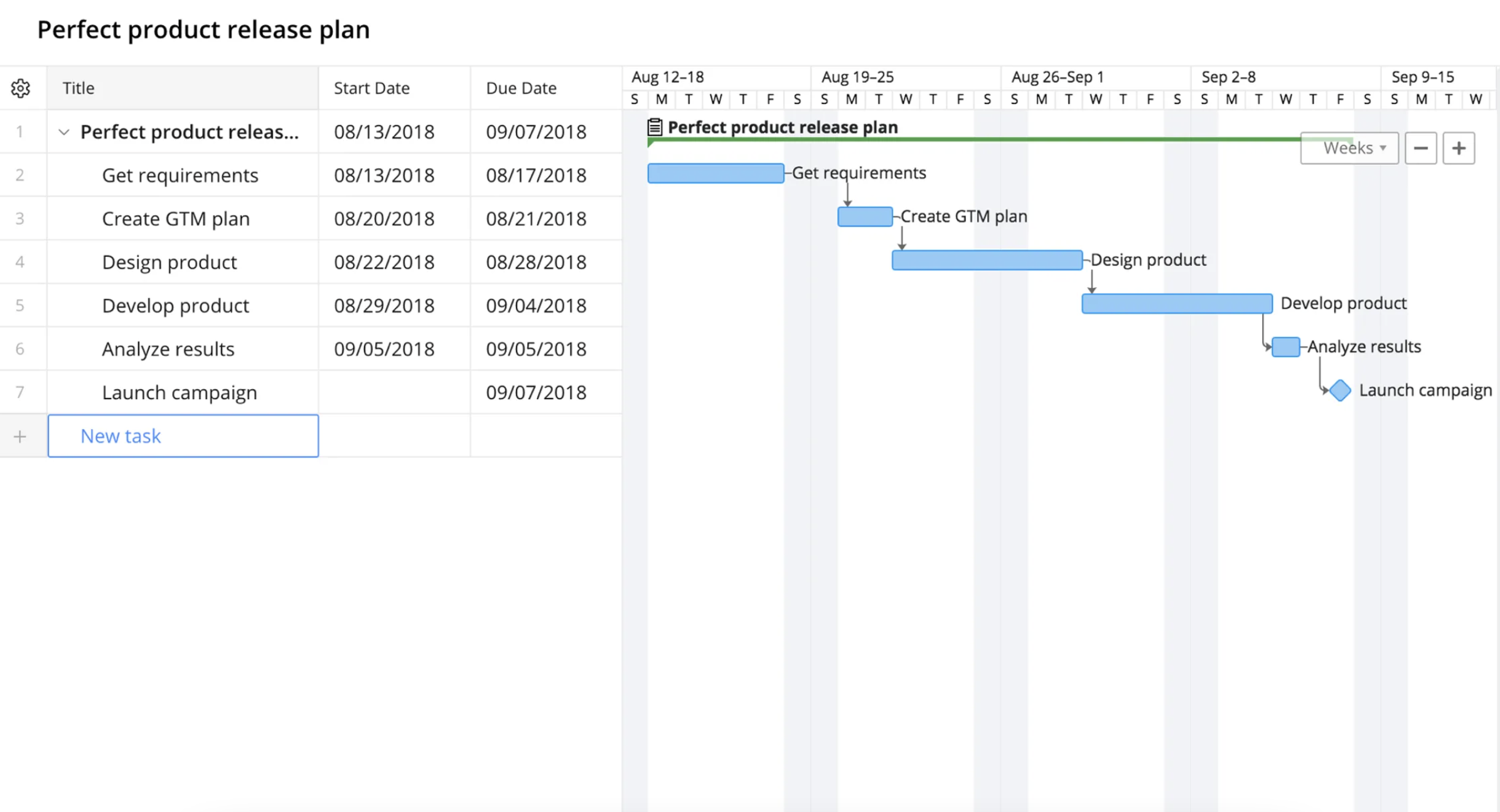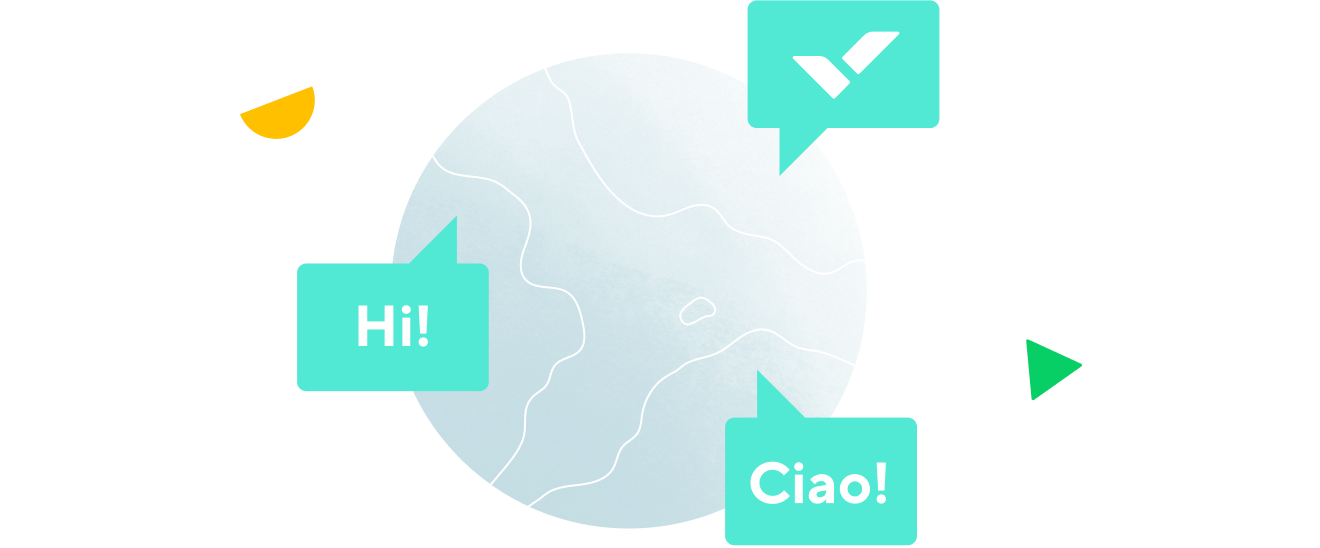Qu'est-ce que la conception de projet en gestion de projet ?
- 1. Fondements de la gestion de projet
- 2. Méthodologies de gestion de projet
- 3. Cycle de vie du projet
- 4. Logiciels de gestion de projet
- 5. Conseils pour le travail collaboratif
- 6. Les fondements de la méthodologie Agile
- 7. Techniques et outils de la gestion de projet Agile
- 8. Cadres de gestion de projet
- 9. Ressources
- 10. Glossaire
- 11. FAQ
- 1. Fondements de la gestion de projet
- 2. Méthodologies de gestion de projet
- 3. Cycle de vie du projet
- 4. Logiciels de gestion de projet
- 5. Conseils pour le travail collaboratif
- 6. Les fondements de la méthodologie Agile
- 7. Techniques et outils de la gestion de projet Agile
- 8. Cadres de gestion de projet
- 9. Ressources
- 10. Glossaire
- 11. FAQ
Qu'est-ce que la conception de projet en gestion de projet ?
La conception de projet désigne un stade précoce lors duquel les principales caractéristiques, la structure, les critères de réussite et les principaux livrables du projet sont déterminés. Le but est de développer une ou plusieurs conceptions pouvant être utilisées pour atteindre les objectifs visés. Les parties prenantes peuvent alors choisir la meilleure conception à utiliser pour l'exécution du projet. La phase de conception du projet peut générer toute une série de supports différents (croquis, organigrammes, arborescences de site, pages HTML, prototypes, impressions photo et plus encore).
Lectures associées :
- Dix éléments essentiels pour un plan de projet parfait (Infographie)
- Les bases de la gestion de projet : initiation aux diagrammes de Gantt
Project design example
Gantt charts are a handy visualization technique in project design. They make it easy to depict and visually explain project plans, schedules, roadmaps, timelines, baselines, critical paths, etc. Once you've developed your Gantt chart, you can share it with team members to loop them on the project activities and execute projects collaboratively.
The Gantt chart below is a simple project design example breaking down project tasks and activities to be performed by team members. It shows the person in charge of a task at a given moment.

In this project design example, you can see the project timeline, task dependencies, and who is responsible for each task.
Gantt charts can serve as project design templates. They help structure and communicate project plans and timelines to foster consistency, efficiency, and collaboration.
Key steps of the project design process
Six key steps define the project design process.
1. Set the project goal
You must first engage with your team and stakeholders to establish your project's goals and desired outcomes. Start by organizing an ideation session where you record the overall project schedule and key deliverables. This helps you understand the project requirements and standards. By interacting with the team and getting their opinions on the project's practicality and feasibility, you reduce time spent on planning, executing, and reviewing and increase the chances of success.
2. Establish outcomes and commitments
Establish the core project objectives, then divide each into manageable chunks and tasks. These should cover all the tasks and activities you will carry out during the project. Alternatively, you can hold off on completing the activity breakdown until a later stage. Some project managers and teams prefer to leave it until the project scheduling part of project planning.
3. Understand the risks and constraints
Look for anything that could get in the way of completing the project. Risks and restrictions on time, money, and resources should be addressed to determine variables that could impact success. Follow up with the appropriate teams and stakeholders to mitigate these issues before the project starts. As the project progresses, document assumptions or hypotheses to assist your Statement of Work (SOW) in the future.
4. Use a visual aid
Make use of visual aids to depict the known variables and goals. Visualization helps team members and other key players easily understand the project's deliverables, timelines, risks, objectives, and applications. These can be Gantt charts, hierarchy charts, work charts, screen designs, prototypes, mind maps, diagrams, trees, flow charts, etc.
Consider your team's needs when selecting a visual aid to communicate and collaborate. For example, a flowchart is more effective for smaller teams working on simple projects, while a breakdown structure suits big teams and complex projects.
5. Estimate your budget
Budget transparency is crucial from the outset. Create a budget with as much information as possible, even if you don't have all the details yet. This reduces the possibility of cost overruns and inadequate budgets during project execution. You may assess the project's viability by estimating your budget during the project design process. A project isn't feasible if the cost exceeds what your client or sponsors can afford.
6. Select the processes for monitoring and approval
Determine the criteria for the success of your project, and create a list of standards to assess whether the results, deliverables, and finished outcomes are met. Determine who is in charge of approvals and procedures to follow for successful approvals.
Top tips to build the best project design
Understanding the project's objective is a crucial prerequisite for creating effective project designs. Other tips for developing project designs include:
- Focus on the goal: Map your goals to project deliverables to guarantee they are accomplished as the project is executed. Start with the end result and work your way backward. You can use project timeline software like Wrike to integrate project goals with the tasks required to achieve them.
- Hold a meeting with every stakeholder: Communication is essential for every project to be successful. Invite team members and stakeholders to be consulted during the project design process. This helps align everyone involved and ensure they're aware and committed to the project's goals.
- Review and modify: Project designing is not a one-and-done process. Your design documentation may need to be adjusted and updated with time. It is a common practice to make changes to project designs as you receive new information and the project advances.
How to use Wrike to structure your project design
To structure your project design templates properly, use a project management platform like Wrike. Wrike's prebuilt templates and Gantt charts assist in creating effective project designs and helps you simplify the process from start to finish. Ready to create your design? Begin today with a two-week free trial of Wrike.

Faites tomber les obstacles, gagnez en clarté, dépassez vos objectifs
Tout est réalisable avec le meilleur logiciel de gestion du travail à portée de main.



